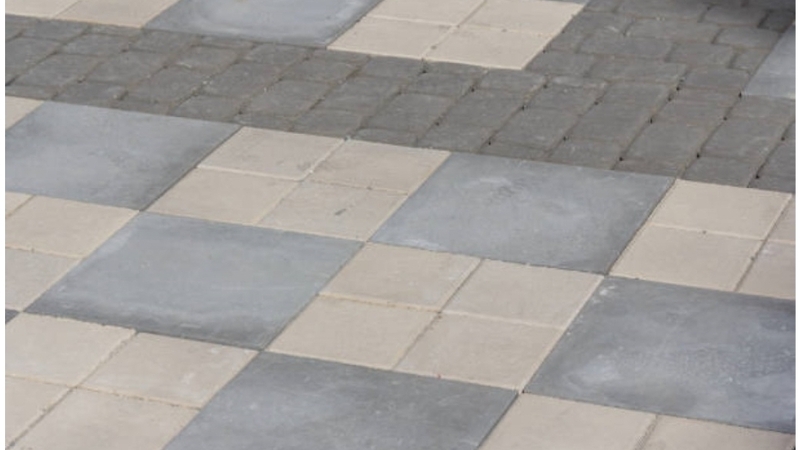In the realm of landscaping and outdoor design, every square foot matters. The choice of paving material can significantly influence the aesthetics, functionality, and overall ambiance of an outdoor space. Among the plethora of options available, 600×600 paving slabs stand out as a versatile and visually appealing choice.
Whether you’re revamping a patio, creating a pathway, or crafting a courtyard, these large-format paving slabs offer endless possibilities for enhancing your outdoor environment.
Understanding the Paving Slabs
Before delving into the design process, it’s crucial to understand the fundamentals of 600×600 paving slabs. These 600×600 paving slabs typically measure approximately 24 inches square and are commonly made from concrete, natural stone, or porcelain materials.
Their larger size makes them ideal for covering expansive areas efficiently, reducing the number of joints, and creating a sleek, contemporary look.
Planning Your Design
Like any design project, creating an outdoor space with 600×600 paving slabs begins with careful planning.
Start by considering the purpose of the area is it a patio for entertaining guests, a tranquil garden path, or a functional driveway? Understanding the intended use will help dictate the layout, material choice, and design elements.
1. Assessing the Site
Evaluate your outdoor space’s terrain, drainage, and landscaping features. Take note of any slopes, obstructions, or utility lines that may impact the design process.
Understanding these factors will inform decisions regarding leveling, drainage solutions, and material compatibility.
2. Setting a Budget
Establishing a budget early on will guide your material selection and design choices.
Consider not only the cost of the paving slabs but also expenses related to site preparation, installation, and any additional features or embellishments you wish to incorporate.
3. Selecting Materials
600×600 paving slabs are available in various materials, each offering distinct advantages in terms of durability, aesthetics, and maintenance requirements.
Concrete slabs are a popular choice for their affordability and versatility, while natural stone options like granite or sandstone exude timeless elegance. Porcelain slabs, on the other hand, offer exceptional durability and resistance to stains and weathering.
4. Designing the Layout
Experiment with different layout patterns and configurations to find one that complements the architectural style of your home and suits your aesthetic preferences. Options range from classic grid patterns to more intricate designs like herringbone or basketweave patterns.
Consider incorporating borders, contrasting colors, or decorative inserts to add visual interest and define distinct areas within the space.
Installation and Implementation
Once your design plan is finalized, it’s time to bring it to life through careful installation and implementation. While some homeowners may opt for a DIY approach, enlisting the expertise of professional landscapers or contractors can ensure proper execution and long-lasting results.
1. Site Preparation
Prepare the site by clearing vegetation, removing debris, and excavating the area to the desired depth. Ensure proper drainage by grading the surface away from structures and incorporating drainage channels or French drains as needed.
2. Base Preparation
Create a sturdy base layer using a combination of crushed stone, sand, and gravel. Compact the base material thoroughly to provide a stable foundation for the paving slabs and prevent settling or shifting over time.
3. Installation Techniques
Lay the paving slabs according to your chosen design pattern, taking care to maintain consistent spacing and alignment.
Use a rubber mallet and a level to ensure each slab is firmly seated and flush with its neighbors. If necessary, cut slabs to fit around obstacles or create custom shapes using a wet saw or angle grinder.
4. Jointing and Finishing
Once all the slabs are in place, fill the joints with fine sand or polymeric jointing compound to stabilize the paving and prevent weed growth.
Compact the material into the joints using a broom or vibrating plate compactor, then sweep away any excess to achieve a clean, polished finish.
Enhancing Your Space
With the paving installation complete, it’s time to add the finishing touches that will elevate your outdoor space from functional to fabulous. Consider incorporating landscaping elements such as planters, garden beds, or water features to soften the hardscape and introduce nature’s beauty.
Outdoor furniture, lighting fixtures, and decorative accents can further enhance the ambiance and create inviting gathering spaces for relaxation and entertainment.
Maintenance and Care
To preserve the beauty and longevity of your outdoor space, regular maintenance and care are essential. Sweep or hose down the paving surface regularly to remove dirt, debris, and organic matter that can accumulate over time.
Periodically inspect the joints for signs of erosion or weed growth, and replenish as needed to maintain structural integrity and curb appeal. Depending on the material used, consider applying sealant or protective coatings to enhance durability and resistance to stains, fading, and moisture penetration.
Conclusion
Designing an outdoor space with 600×600 paving slabs offers endless opportunities for creativity, functionality, and aesthetic expression. By carefully planning your design, selecting quality materials, and executing proper installation techniques, you can transform any outdoor area into a stunning retreat that reflects your style and enhances your lifestyle.
Whether you’re creating a cozy patio oasis, a grand entranceway, or a meandering garden path, the versatility and visual impact of these large-format paving slabs are sure to impress for years to come.
